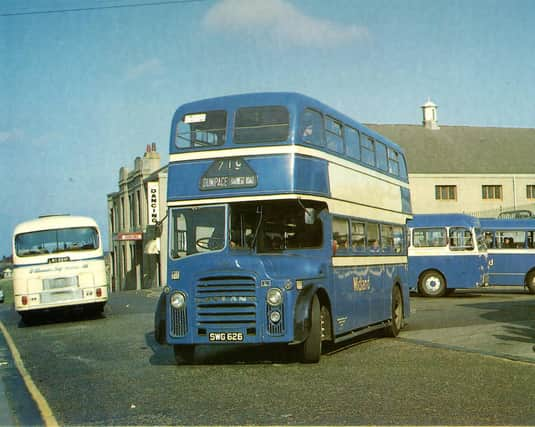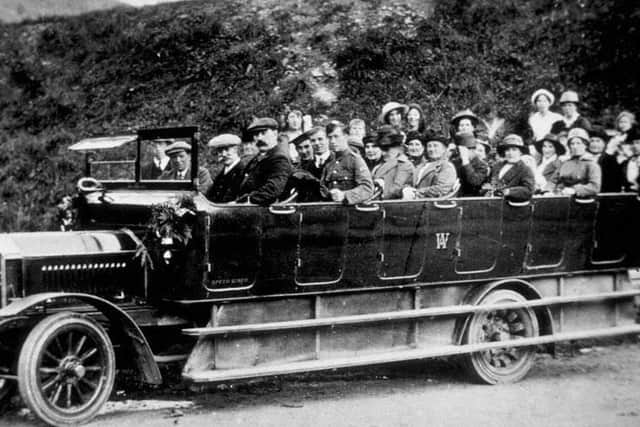Looking back with Ian Scott on the man behind Falkirk's most iconic vehicles - a blue Alexander's double-decker bus


In 1924, a century ago this year, the family firm became a limited company as Walter Alexander and Sons although the man himself had already been in the business for many years.
Walter served his time as a grate fitter in Bonnybridge and in 1902 at the age of 24 began repairing bicycles from a shed in Brown Street, Camelon. Despite the popularity of the electric trams which started running round the circular in 1905, Walter was smart enough to see their limitations and to look for ways of serving the outlying areas beyond the tramlines. It was a bold decision because the tram company itself was expanding into bus services and they had more capital than Walter could muster. In 1913 he acquired a chain-driven Belhaven charabanc and the following year began a service from Falkirk to Bonnybridge. This was later extended to Denny, then Kilsyth and on to Glasgow. The Alexander revolution was underway but had to wait until after the war to get fully mobile.
Advertisement
Hide AdAdvertisement
Hide AdA few years ago my friend and neighbour Steve Mackie formerly of the Gilded Cage passed me some old documents collected by his father and grandfather who were the proprietors of the Falkirk Mail. One was a 1950 BBC radio script featuring the broadcaster Jack House who came to Falkirk to interview Thomas Mackie senior and other luminaries like Festus Moffat and Provost Wallace. One other guest was Mrs Mary Stewart (whose maiden name was Cramb), the first ever Alexander’s conductress who had interesting memories of the man who started it all way back in 1913.


Mrs Stewart had worked on the trams during the war and she was asked by Walter in 1922 to be his first conductress. She remembers him driving the buses himself to Kilsyth and back with her collecting the fares: “ Walter wasn’t very sure what the fares should be but he knew I had experience on the tramways so he told me just to charge the travellers what I thought was a fair fare.” Soon the pair were going further afield: “When we got to Glasgow with our 40 seater bus there were a lot of people in the wee buses waiting to go. But when they saw the big bus they all got off and got on ours.” Mary earned £2 a week and when she gave up the job in 1925 Alexander’s had 40 buses.
At around the same time Alexander’s moved into manufacturing, building bus bodies in Brown Street as well as expanding the service to towns and villages all over central Scotland. In 1929 the firm became part of the SMT group but continued to operate independently retaining the Alexander’s name and identity. By the mid 1930s the firm was running over 1000 buses across the country including the famous ‘bluebird’ fleet. Walter was joined by his son Walter junior and together they masterminded the huge expansion that made Alexander’s a giant of Scottish industry and carried the name of Falkirk to every corner of the globe.
Despite mergers and take-overs, nationalisation and privatisation, the name Alexander’s lives on not only in the successful bus building firm but in the hearts and minds of every Falkirk bairn for whom a glimpse of a big blue bus meant you were not far from home.